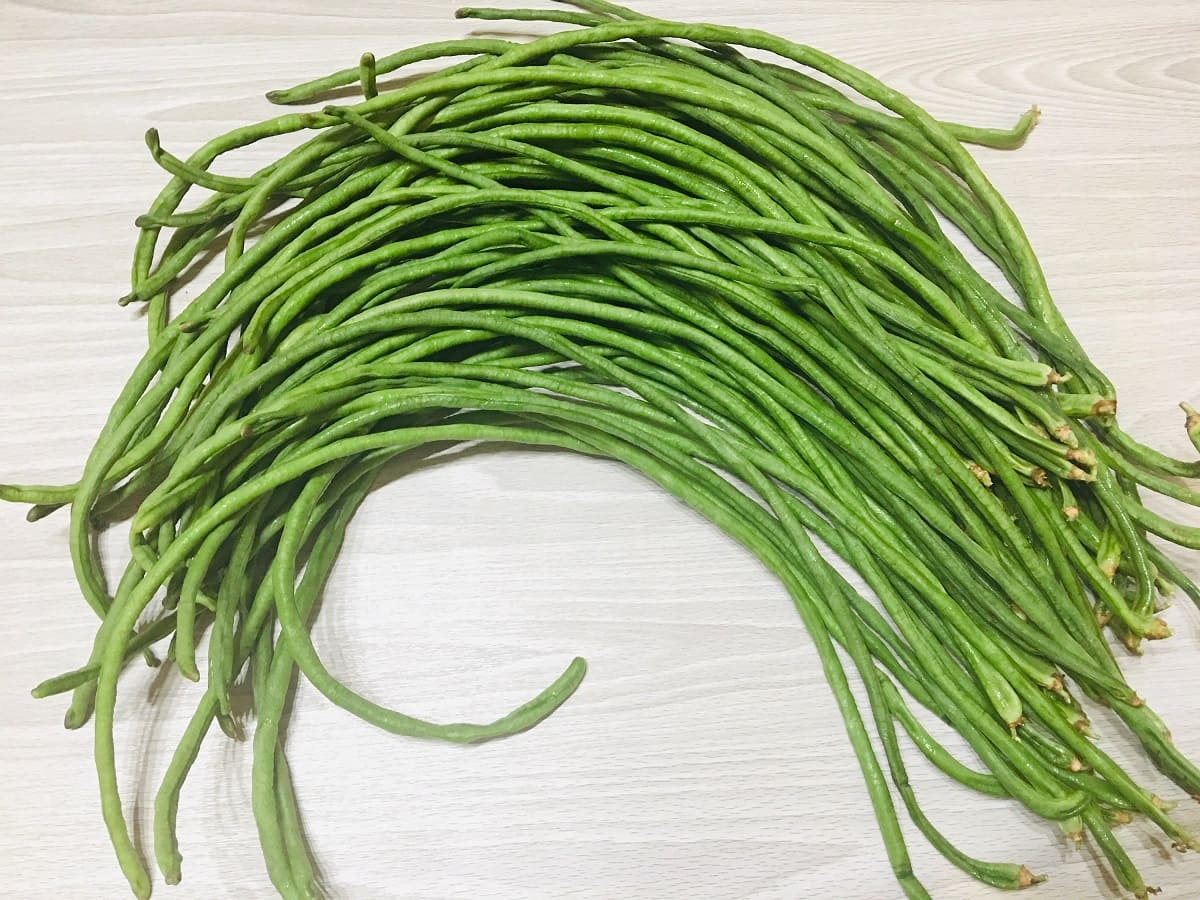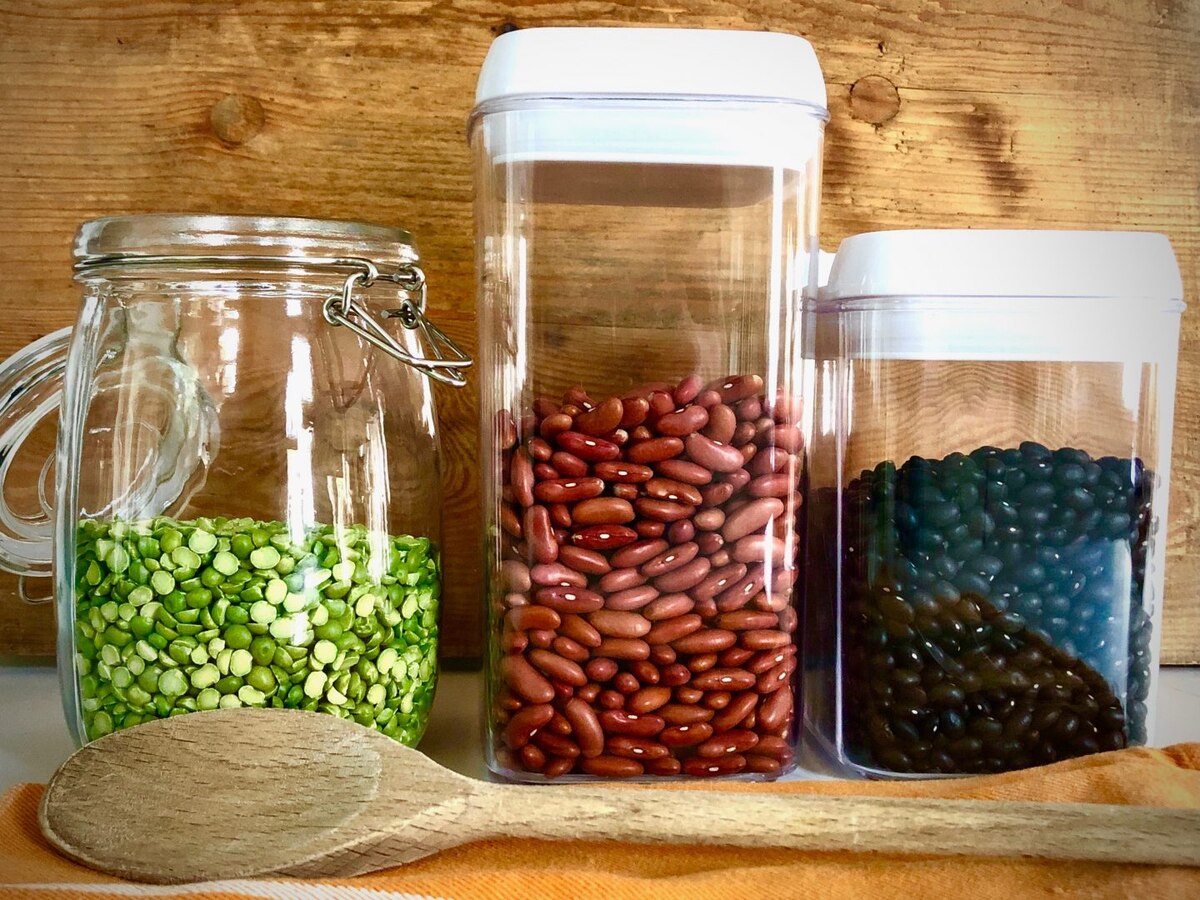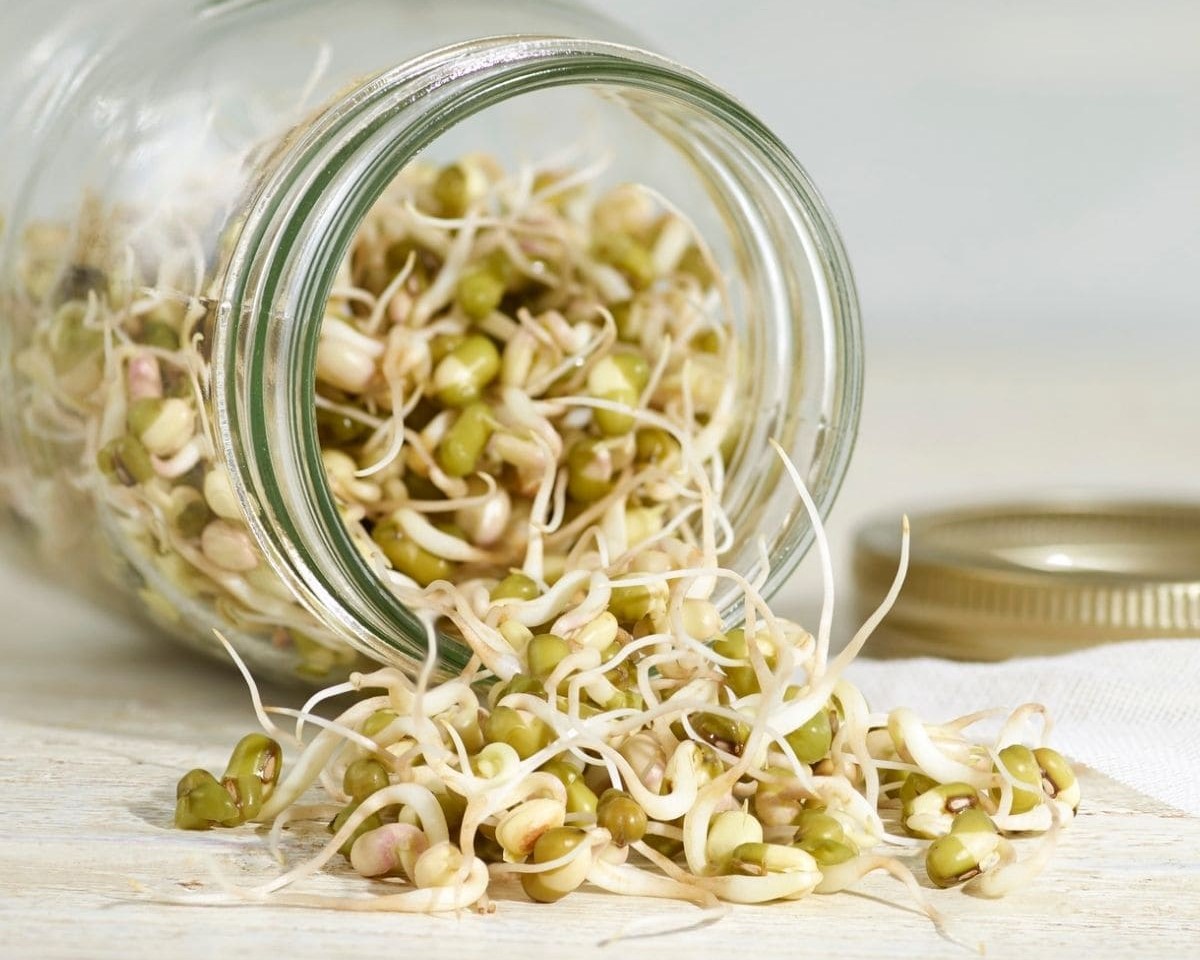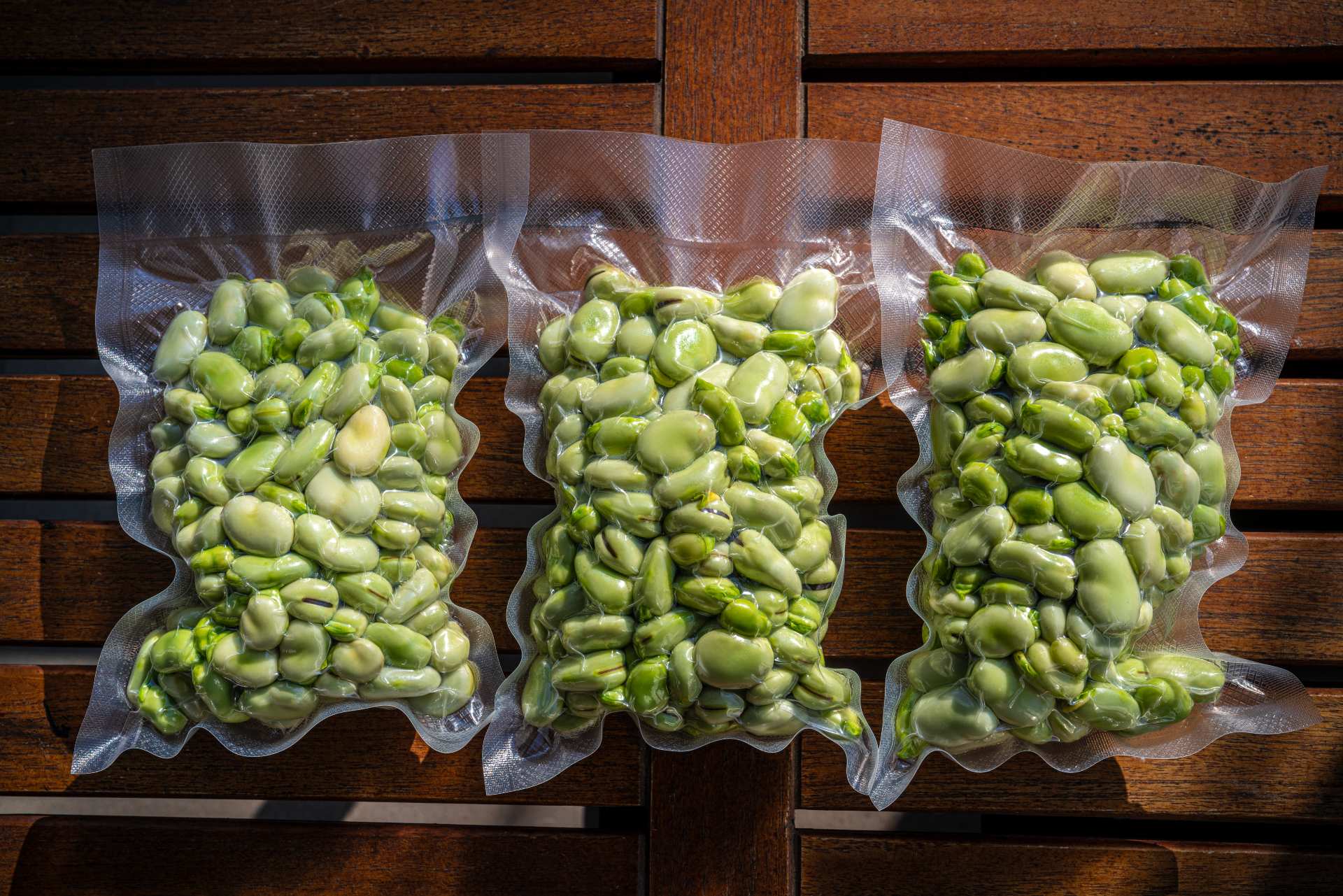

Articles
How To Store Rice And Beans
Modified: February 28, 2024
Learn the best way to store rice and beans in this comprehensive articles. Find tips and tricks to keep your staple foods fresh and tasty for longer.
(Many of the links in this article redirect to a specific reviewed product. Your purchase of these products through affiliate links helps to generate commission for Storables.com, at no extra cost. Learn more)
Introduction
In today’s fast-paced world, having a well-stocked pantry is essential. Rice and beans are staple food items that not only provide nourishment but also offer versatility in a variety of dishes. Whether you’re a student on a tight budget, a busy professional looking for quick and nutritious meals, or someone preparing for emergencies or unforeseen circumstances, properly storing rice and beans is crucial to ensure their longevity and quality.
Keeping rice and beans fresh requires proper storage techniques that protect them from moisture, pests, and mold growth. By following the right methods, you can enjoy these nutritious pantry staples for months or even years to come.
This article will guide you through the process of storing rice and beans effectively, offering tips to maintain freshness and preserve their nutritional value. So let’s dive in and explore the importance of proper rice and beans storage and how to achieve it.
Key Takeaways:
- Proper storage of rice and beans is crucial for preserving their nutritional value, preventing spoilage, and saving money by minimizing waste. Selecting the right containers and following specific storage techniques can ensure their longevity and usability.
- Implementing proper labeling, rotation, and protection against pests and mold is essential for maintaining the freshness and quality of stored rice and beans. By following these guidelines, you can enjoy the benefits of these pantry staples for extended periods and be prepared for various situations.
Read more: How To Store Beans
Importance of Proper Rice and Beans Storage
Proper storage of rice and beans is vital for several reasons. First and foremost, it helps to maintain their nutritional value. Rice and beans are excellent sources of carbohydrates, fiber, protein, and various essential vitamins and minerals. However, improper storage conditions can cause the degradation of these nutrients over time, leading to a loss in their nutritional content.
In addition to preserving their nutritional value, proper storage also helps prevent spoilage. Rice and beans are prone to contamination by pests such as weevils, moths, and rodents that are attracted to their high starch content. When exposed to moisture and pests, these pantry staples can quickly become infested and inedible.
Proper storage not only ensures the longevity of rice and beans but can also save you money. By storing these staples correctly, you minimize waste and reduce the need for frequent restocking. This is particularly beneficial for those who buy in bulk or those who rely on the longevity of their pantry supplies during emergencies or for extended periods.
Furthermore, having a well-stocked pantry can provide peace of mind. By storing rice and beans properly, you can be confident that you always have a readily available source of nutritious and filling meals. Whether you’re facing a busy week or an unexpected event, having these staples on hand can alleviate stress and help you maintain a healthy diet.
Overall, proper storage of rice and beans is crucial for preserving their quality, nutritional value, and ensuring their long-term usability. With the right storage techniques, you can enjoy the benefits of these versatile pantry staples for extended periods without worrying about spoilage or nutrient loss.
Selecting the Right Containers
Choosing the right containers for storing rice and beans is essential to maintain their freshness and protect them from external factors. Here are some factors to consider when selecting containers:
- Airtight: Opt for containers that provide an airtight seal. This prevents moisture, air, and pests from entering and affecting the quality of the rice and beans.
- Durable: Select containers made of durable materials such as glass, stainless steel, or food-grade plastic. They should be able to withstand long-term storage without deteriorating or leaching harmful chemicals into the food.
- Opaque: Use containers that are opaque or tinted to block out light. Exposure to light can accelerate the breakdown of certain nutrients in rice and beans.
- Size: Consider the amount of rice and beans you’ll be storing and choose containers that are appropriately sized. Smaller containers are ideal for everyday use, while larger containers are suitable for long-term storage.
- Stackable: Opt for containers that are stackable to maximize storage space and keep your pantry organized.
Some popular container options for storing rice and beans include glass jars with airtight lids, BPA-free plastic containers, or food-grade storage bags. Mason jars are particularly popular as they are both functional and aesthetically pleasing.
It’s important to note that if you are using previously used containers, ensure they are thoroughly cleaned and free from any residual odors that could transfer to the rice and beans. Proper sanitation is key to maintaining the quality of your stored food.
By selecting the right containers, you can create an optimal storage environment for your rice and beans, ensuring their freshness and longevity.
Storing Rice
Rice is a staple food that is consumed worldwide and can be easily stored for long periods if done correctly. Follow these guidelines to store rice properly:
- Choose the right type of rice: There are various types of rice available, including white rice, brown rice, jasmine rice, basmati rice, etc. Each type has different storage requirements, so it’s important to understand the specific needs of the rice you’re storing.
- Check for pests: Before storing, inspect the rice for any signs of pests such as weevils or larvae. Discard any infested grains and ensure that the remaining rice is clean and free from any debris.
- Dry the rice: To prevent moisture buildup, make sure the rice is completely dry before storing. Spread the rice out on a clean, flat surface and allow it to air dry for a few hours or use a food dehydrator if needed.
- Use airtight containers: Transfer the dried rice into airtight containers, such as glass jars or food-grade plastic containers, that provide a secure seal. Ensure that the containers are clean and dry before adding the rice.
- Store in a cool and dark place: Rice is best stored in a cool, dry, and dark location, away from direct sunlight and heat sources. Exposing rice to light and heat can accelerate the degradation process and reduce its shelf life.
- Avoid temperature fluctuations: Fluctuations in temperature can lead to condensation inside the containers, which can promote mold growth and affect the quality of the rice. Choose a storage area with a consistent temperature.
- Label and date: Properly label the containers with the type of rice and the date of storage. This will help you keep track of the freshness and rotation of your rice supply.
By following these guidelines, you will be able to store rice properly and extend its shelf life. Remember to periodically check on your rice supply, especially if stored for longer durations, to ensure it remains fresh and free from any signs of spoilage.
Storing Beans
Beans are nutritious and versatile legumes that can be stored for long periods when stored properly. Follow these tips to ensure the optimal storage of your beans:
- Inspect and sort: Before storing, carefully inspect the beans for any damaged or discolored ones. Remove any foreign objects or debris, and give them a quick rinse under running water.
- Dry the beans: It’s important to thoroughly dry the beans before storing to prevent moisture buildup. Spread them out on a clean towel or drying rack in a well-ventilated area until they are completely dry.
- Choose the right containers: Similar to storing rice, use airtight containers made of glass, stainless steel, or food-grade plastic to store your beans. Make sure the containers are clean and dry before filling them with beans.
- Store in a cool and dry place: Beans should be stored in a cool, dry area away from direct sunlight and heat sources. Exposure to light and heat can cause the beans to lose their quality and become stale.
- Label and date: Properly label the containers with the type of beans and the date of storage. Having this information readily available will help you keep track of the freshness and rotation of your bean supply.
- Consider vacuum sealing: For long-term storage, you may want to consider vacuum-sealing your beans to further protect them from moisture and pests. Vacuum-sealed bags can help extend the shelf life of your beans.
- Rotate your stock: Just like any other pantry items, it’s important to regularly rotate your stock of beans. Use the “first in, first out” principle, where you use the oldest beans first and replenish your stock with fresh ones.
By following these guidelines, you can maximize the shelf life and maintain the quality of your beans over an extended period. Remember to periodically check your stored beans for any signs of spoilage, pests, or unusual odors to ensure they remain safe for consumption.
Store rice and beans in airtight containers to keep out moisture and pests. Keep them in a cool, dark place to maintain their quality and prevent spoilage.
Read more: How To Cook Dry Beans In A Rice Cooker
Keeping Rice and Beans Fresh
To ensure the freshness of your stored rice and beans, it’s important to take the following measures:
- Avoid excessive moisture: Moisture is one of the main culprits of rice and bean spoilage. Keep your storage area dry and avoid any contact with water or other sources of moisture. Moisture can lead to mold growth and the development of unpleasant odors.
- Minimize exposure to light: Light can accelerate the breakdown of certain nutrients in rice and beans. Store them in opaque containers or in a dark pantry to protect them from light exposure.
- Handle with clean hands: When accessing your stored rice and beans, make sure your hands are clean to avoid introducing any contaminants into the containers.
- Avoid temperature fluctuations: Fluctuations in temperature can cause condensation inside the containers and lead to moisture buildup. Choose a storage area with a consistent temperature to minimize the risk of spoilage.
- Keep pests away: Pests such as weevils and moths are attracted to grains and legumes. To prevent infestations, consider using natural pest deterrents like bay leaves or store-bought desiccant packets in your containers.
- Store in small amounts: It’s advisable to store rice and beans in smaller quantities rather than large batches. This allows for easier rotation and minimizes the risk of spoilage in case one container gets contaminated.
- Seal the containers tightly: Ensure that your containers have airtight seals to prevent the entry of air, moisture, and pests. This will help maintain the freshness and quality of rice and beans.
- Inspect regularly: Periodically check your stored rice and beans for any signs of spoilage, pests, or unusual odors. If you notice any issues, discard the affected portion and transfer the rest to a new container.
By following these guidelines, you can prolong the freshness of your stored rice and beans, ensuring they remain safe and edible for an extended period.
Proper Labeling and Rotation
Properly labeling and rotating your stored rice and beans is essential for maintaining freshness and ensuring you use them before they expire. Here are some tips for effective labeling and rotation:
- Label containers: Clearly label each container with the type of rice or beans stored inside. This will help you quickly identify and access the desired item.
- Date of storage: Include the date of storage on each container. This allows you to track how long the rice or beans have been stored and helps you prioritize usage based on freshness.
- First in, first out (FIFO): Follow the FIFO principle when consuming your stored rice and beans. Place newer containers at the back of the storage area and use the older ones first.
- Rotate stock regularly: Regularly assess your inventory and rotate your stock accordingly. This ensures that you consume the oldest rice and beans first, minimizing the risk of spoilage.
- Create a system: Establish a system that is easy to follow, such as grouping containers based on the type of rice or beans and arranging them in chronological order of storage.
- Inspect before rotation: Before using rice or beans from a container, carefully inspect them for any signs of spoilage, bugs, or unusual odors. Discard any contaminated or damaged grains to avoid cross-contamination.
- Update labeling as needed: If you transfer rice or beans to new containers, ensure that you update the labeling with the correct information, including the date of transfer.
- Maintain an inventory: Keep a record of your stored rice and beans, noting the quantities and expiration dates. This will help you plan your meals and grocery shopping effectively.
By implementing proper labeling and rotation practices, you can optimize the shelf life of your rice and beans, minimize waste, and ensure that you always have a fresh supply at hand.
Protecting Against Pests and Mold
Pests and mold can quickly ruin your stored rice and beans, rendering them inedible. To protect against these nuisances, follow these tips:
- Inspect before storage: Before storing rice and beans, carefully check them for any signs of pests or mold. Discard any infested or moldy grains and only store clean, healthy ones.
- Use airtight containers: Store your rice and beans in airtight containers to prevent pests from gaining access. Make sure the containers have a tight seal to keep out air, moisture, and pests.
- Consider using bay leaves: Place a few dried bay leaves in the containers along with your rice and beans. The natural oils released by the leaves act as a deterrent to pests such as weevils and moths.
- Avoid cardboard packaging: Avoid storing rice and beans in their original cardboard packaging as it is susceptible to pests and can absorb moisture. Transfer them to more secure containers as soon as possible.
- Keep the storage area clean: Regularly clean your storage area to prevent pest infestations. Wipe down shelves, vacuum any crumbs or debris, and ensure that there are no food spills or other attractants present.
- Monitor for signs of pests: Periodically check your stored rice and beans for any signs of pests, such as live insects, webbing, or droppings. If you notice any infestation, take immediate action to isolate and eliminate the affected containers.
- Dry before storing: Ensure that your rice and beans are thoroughly dry before storing them. Moisture can create an ideal environment for mold growth. If you live in a humid climate, consider using moisture-absorbing packets in your containers.
- Rotate and use regularly: Regularly rotating and using your stored rice and beans helps prevent them from sitting idle for too long, reducing the risk of pest infestations.
By implementing these preventive measures, you can protect your rice and beans from pests and mold, ensuring their long-term viability and preserving their quality for consumption.
Tips for Long-Term Storage
If you’re looking to store rice and beans for an extended period, follow these tips to ensure their long-term shelf life:
- Choose the right varieties: Some rice and bean varieties are better suited for long-term storage than others. Opt for varieties known for their long shelf life, such as white long-grain rice, pinto beans, or black beans.
- Properly package for long-term storage: Consider using Mylar bags and oxygen absorbers for long-term storage. Mylar bags provide an extra layer of protection against light, moisture, and pests, while oxygen absorbers help to extend shelf life by eliminating oxygen that can lead to spoilage.
- Store in a cool environment: For long-term storage, select a cool storage area with a consistent temperature of around 50 to 70 degrees Fahrenheit (10 to 21 degrees Celsius). Avoid storing rice and beans in areas prone to temperature fluctuations or high humidity.
- Frequently monitor and rotate stock: Regularly check on your stored rice and beans to ensure they remain free from pests, moisture, or any signs of deterioration. Rotate your stock by using the oldest supplies first and replenishing with fresh ones.
- Consider freezing: If you have the freezer space available, consider freezing a portion of your rice and beans to extend their shelf life even further. Divide them into meal-sized portions and store them in airtight freezer bags or containers.
- Keep a comprehensive inventory: Maintain a detailed inventory of your long-term storage, noting quantities, dates of storage, and expiration dates. This will help you track and manage your supplies effectively.
- Regularly rotate and use stored supplies: Even with long-term storage, regularly rotate your supplies and incorporate them into your meals. This helps ensure that the food gets consumed before it reaches its expiration date.
- Keep emergency supplies separate: If you’re storing rice and beans specifically for emergencies, consider keeping them separate from your everyday pantry supplies. This helps ensure that your emergency reserves are easily accessible when needed.
By following these tips, you can successfully store rice and beans for extended periods, allowing you to maintain a reliable food supply and be prepared for various situations.
Read more: How To Store Soaked Beans
Conclusion
Properly storing rice and beans is essential for maintaining their freshness, nutritional value, and longevity. By following the guidelines and tips outlined in this article, you can ensure that your pantry staples remain in optimal condition, ready to be used for delicious and nutritious meals.
We discussed the importance of proper storage, selecting the right containers, and the specific techniques for storing both rice and beans. We also explored the importance of keeping rice and beans fresh and protecting them against pests and mold. Additionally, we provided tips for long-term storage and emphasized the significance of proper labeling and rotation.
By taking the time to store rice and beans correctly, you can enjoy the benefits of these versatile ingredients for months or even years to come. Maintaining a well-stocked pantry not only provides peace of mind but also helps you save money and ensure a consistent food supply during emergencies or unforeseen circumstances.
Remember to regularly check on your stored rice and beans, inspecting for any signs of spoilage, pests, or moisture. Rotate your supplies, using the oldest ones first, and replenish with fresh stock. Stay organized with clear labeling and keep inventory of your stored items to avoid waste and ensure efficient usage.
Whether you’re a seasoned prepper, a thrifty shopper, or simply someone who appreciates having a well-stocked pantry, the knowledge and techniques provided in this article will serve you well in maintaining the quality and usability of your stored rice and beans.
So start implementing these storage methods today and enjoy the convenience and peace of mind that comes with having a reliable supply of rice and beans at your fingertips.
Frequently Asked Questions about How To Store Rice And Beans
Was this page helpful?
At Storables.com, we guarantee accurate and reliable information. Our content, validated by Expert Board Contributors, is crafted following stringent Editorial Policies. We're committed to providing you with well-researched, expert-backed insights for all your informational needs.














0 thoughts on “How To Store Rice And Beans”